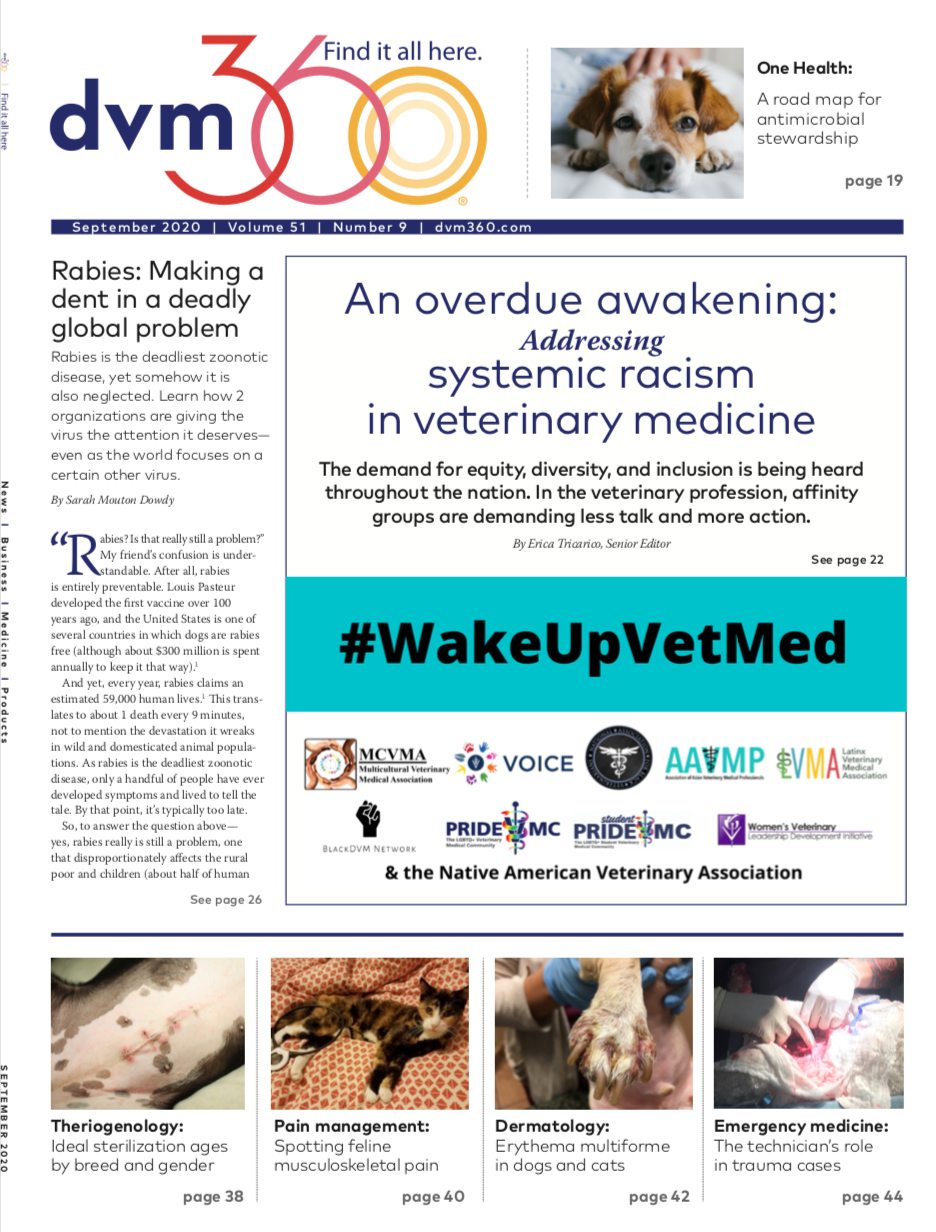Crunching the data on pet foods
Pet food labels are awash with unfamiliar ingredients, nutrient percentages, feeding directives, and marketing claims. Use these guidelines to help your clients understand the complexities of pet food labels and match dietary choices to pets’ nutritional needs.
fserega / adobe.stock.com

Emotions are tied to food, and most pet owners have strong feelings about how they feed their pets. But folding good information into those nurturing feelings can be tough for pet owners, especially with so much information—and misinformation—out there, explained Deborah Linder, DVM, MS, DACVN, a board-certified veterinary nutritionist at Tufts University’s Cummings Veterinary Medical Center.
At the Fetch dvm360 virtual conference, Dr. Linder provided guidelines for counseling cat and dog owners about choosing pet foods. The common question—“What is the best food?”—is a springboard for teaching clients how to select a food with their specific pet in mind, she said. “I don’t think there’s a one-size-fits-all choice.”
The resources
It is up to veterinarians to walk their clients through the evidence. The 2 places pet owners can go for food facts are the Association of American Feed Control Officials (AAFCO) and the World Small Animal Veterinary Association (WSAVA).
AAFCO is a voluntary membership organization that identifies safe pet food ingredients, outlines food label requirements, and builds nutrient profiles based on the latest findings in pet nutrition research. Although states use AAFCO guidelines as a basis for creating their pet food regulations, the organization has no enforcement role.
Using the latest research findings, AAFCO calculates nutrient profiles for commercial pet foods annually. These profiles set forth minimum and maximum percentages of nutrients, on a dry-matter (moisture-free) basis, required for a diet to be considered “complete and balanced” for the main life stages: growth (puppies and kittens), adult (1 year to end of life), and gestation/lactation.
Some foods are formulated to meet the needs of “all life stages.” However, no AAFCO nutrient profiles exist for specific population segments like “canine athletes” or “senior cats.” Such labeling is simply marketing, Dr. Linder noted.
WSAVA offers a toolkit for pet owners to procure nutrition information tailored to their pets. The kit also lists specific questions owners can ask food companies or their own veterinarian regarding product research, manufacturer quality control, etc.
“I like to give owners some agency so they understand how I’m selecting food and thinking through what’s best for pets,” she said. “I also give them information so they can be more active in the decisions.”
Neither organization makes brand recommendations, but owners can use AAFCO and WSAVA resources and guidelines to hone in on specific foods that are ideal for their pets by following these key steps
- Identify responsible pet food manufacturers.
- Evaluate food quality control methods.
- Check labels to see how foods line up with a specific pet’s nutritional needs.
- Look for red flags on pet labels.
Does the manufacturer measure up?
How can you know if a company is responsible? Dr. Linder advocates phoning them directly. This is one way to find out if a company employs critical staff, such as a board-certified veterinary nutritionist, a PhD nutritionist, an animal food formulation specialist, and a toxicologist.
“At the end of the day,” she explained, “someone with expertise has to come up with the formulation for a food, think through that recipe, consider all the ingredients that should go into it and how these ingredients interact with each other, and know the biochemistry and nutritional physiology behind that.”
She cautioned against placing much credence in the celebrity spokespeople who represent specific pet foods or their manufacturers.
While on the phone with the company, one might also inquire about quality control testing in the processing of their foods. Also, has the manufacturer looked at how the ingredients interact with each other? Have digestibility and bioavailability been studied? Does the product travel well? Withstand the elements? Have adequate shelf life? One company, Dr. Linder pointed out, went so far as to store food samples in a sauna for a month and then cultured them for bacterial growth.
Labeling labels
Once the company and their quality control measures have been given the thumbs-up, it’s time to look at food labels. The AAFCO statement describes a food in 1 of 2 ways:
- “Complete and balanced” means that the food contains all essential ingredients for a healthy puppy/kitten, adult, dog/cat in gestation/lactation, or dog/cat of any life stage.
- “For intermittent or supplemental feeding” indicates that the food was formulated for a specific health status and should be fed only under veterinary supervision.
For “complete and balanced” foods, the label displays the method by which these criterions are met: either formulated to meet AAFCO nutrient profiles via calculations and laboratory analysis, or through real-life feeding trials on dogs or cats. A combination of these methods is preferred, but of the 2, feeding trials are more rigorous and carry greater weight, Dr. Linder explained.
The label also bears the ingredients list. The dreaded “by-products” that appear on many pet food labels designate non-rendered clean parts other than muscle meat…essentially organs such as lung, liver, and kidney; they do not include hair, horns, hooves, or teeth. Although by-products get a bad rap, Dr. Linder said, they often have high nutritive value and do not necessarily diminish quality.
Owners can gauge how a particular food measures up to AAFCO nutrient profiles by consulting the label’s “guaranteed analysis,” which logs percentages of crude protein, crude fat, crude carbohydrates, and moisture. Other nutrients, such as minerals, may be itemized as well. These percentages are listed on an “as fed” basis, which does not exclude moisture content. Nutrient converters, available online, can be used to translate “as fed” to “dry matter” percentages.
Red flags
Dr. Linder added that the pet owner perusing the food aisles should look out for common red flags on food labels, such as outlandish marketing tactics, lack of information, disregard for facts (ie, “Dogs get heart attacks just like people do”), and unfounded health claims (ie, “This food treats ear infections”).
By prodding clients to lift the emotion out of pet food purchases, she concluded, veterinarians can work with them to implement a team approach that highlights their mutual goal of doing what’s best for the pet.

Podcast CE: A Surgeon’s Perspective on Current Trends for the Management of Osteoarthritis, Part 1
May 17th 2024David L. Dycus, DVM, MS, CCRP, DACVS joins Adam Christman, DVM, MBA, to discuss a proactive approach to the diagnosis of osteoarthritis and the best tools for general practice.
Listen